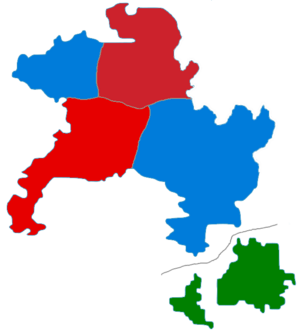Akashian general election, 1998
| |||||||||||||||||||||||||||||||||||||||||||||||||||||||||||||||||||||||||||||||||||||
400 seats in the National Assembly 201 seats needed for a majority | |||||||||||||||||||||||||||||||||||||||||||||||||||||||||||||||||||||||||||||||||||||
|---|---|---|---|---|---|---|---|---|---|---|---|---|---|---|---|---|---|---|---|---|---|---|---|---|---|---|---|---|---|---|---|---|---|---|---|---|---|---|---|---|---|---|---|---|---|---|---|---|---|---|---|---|---|---|---|---|---|---|---|---|---|---|---|---|---|---|---|---|---|---|---|---|---|---|---|---|---|---|---|---|---|---|---|---|---|
| Turnout | 88,8% | ||||||||||||||||||||||||||||||||||||||||||||||||||||||||||||||||||||||||||||||||||||
| |||||||||||||||||||||||||||||||||||||||||||||||||||||||||||||||||||||||||||||||||||||
 Most voted party by province | |||||||||||||||||||||||||||||||||||||||||||||||||||||||||||||||||||||||||||||||||||||
| |||||||||||||||||||||||||||||||||||||||||||||||||||||||||||||||||||||||||||||||||||||
A general election was held in Akashi on 27 June 1998. It was preceded by an electoral reform that restored independent lists' right to run for the party-list vote, and allowed parties that won a constituency seat to be excluded from the election threshold.
The Shinobu Furukawa government's popularity had been in decline since its re-election four years before. Voters increasingly turned against her forceful government style, despite her successes. While the Moderate People's Party retained a narrow lead in opinion polls, the Communist Party began to fall behind the Socialist Party, which grew hopeful it would emerge from its wilderness period.
Several party mergers since 1994 had consolidated the government to three parties: the Social Credit Party had merged with the CP, and the Justice Party with the SP. The New Frontier Party, frustrated by its dealings with Shinobu, strongly hinted during the campaign it would "reconsider" its relations with the government.
Results
| General election, 27 June 1998 | |||||||||
|---|---|---|---|---|---|---|---|---|---|

| |||||||||
| Party | Party list | Constituency | Total seats |
+/- | |||||
| PR | % | +/− | STV | % | +/− | ||||
| Moderate People's Party | 1.450.087 | 22,0% | +3,2% | 1.351.369 | 20,5% | +3,3% | 84 | -12 | |
| Socialist Party | 1.100.748 | 16,7% | +6,5% | 949.254 | 14,4% | +2,9% | 72 | +28 | |
| Communist Party | 804.139 | 12,2% | -4,3% | 837.190 | 12,7% | -8,1% | 69 | -25 | |
| National Cooperative Party | 711.861 | 10,8% | +0,8% | 731.717 | 11,1% | +1,0% | 43 | +4 | |
| Green Party | 672.313 | 10,2% | +0,8% | 586.692 | 8,9% | +0,1% | 38 | -1 | |
| United Reform Party | 645.948 | 9,8% | +1,7% | 580.100 | 8,8% | +3,6% | 32 | +11 | |
| National Union | 362.522 | 5,5% | +1,5% | 369.155 | 5,6% | +1,4% | 16 | +5 | |
| New Frontier Party | 263.652 | 4,0% | -4,2% | 362.562 | 5,5% | -2,1% | 18 | -12 | |
| Liberal Party | 224.104 | 3,4% | -1,6% | 217.537 | 3,3% | ±0,0% | 9 | -5 | |
| Conservative National Party | 131.826 | 2,0% | +1,0% | 210.945 | 3,2% | +2,4% | 5 | +5 | |
| Akashi Renewal Party | 125.235 | 1,9% | ±0,0% | 171.393 | 2,6% | +1,5% | 5 | +5 | |
| Independents | 98.870 | 1,5% | +1,5% | 224.130 | 3,4% | +2,5% | 9 | +7 | |
| Total | 6.591.302 | 100% | — | 6.592.045 | 100% | — | 400 | — | |
| Registered voters and turnout | 7.422.638 | 88,8% | — | 7.422.638 | 88,8% | ||||
| Bloc strength | ||
|---|---|---|
| Bloc | Parties | Seats |
| Crimson bloc | CP, GP | 107 |
| Pale crimson bloc | SP, NU | 88 |
| Light yellow bloc | NCP, NFP | 61 |
| Light blue bloc | MPP, URP, LP | 125 |
| Dark blue bloc | CNP, ARP | 10 |
- Government: Communist Party–Socialist Party–Green Party coalition.
Surprising the public and media, the election returned a hung parliament. The MPP increased its share of the vote but shockingly faltered in constituencies, and lost 12 seats in total. The SP saw a significant boost and finished second, with 72 seats, while the CP lost support but finished third with 69 seats.
The NFP had a very disappointing performance, losing 2–4% of the vote and 12 seats, being surpassed by the URP and NU. At the province level, the MPP managed to win the most votes in Matō, but were overtaken by the SP in Kagi. The CP only swept its stronghold of Kobi, but had a sufficiently strong performance as a third party in the rest of the country to stave off a greater loss.
Unexpectedly, the Akashi Renewal Party and Conservative National Party both managed to win a constituency seat each, entitling them to party list seats.
At the inauguration of the 17th Assembly, the NFP changed its affiliation to the light yellow bloc. There was no clear government formation. The crimson and pale crimson blocs together had 195 seats. The light blue and light yellow blocs, with all the independents, also had 195 seats. The biggest complication was the dark blue bloc, which the centre-right adamantly refused to deal with.
In the first parliamentary vote, Shinobu's government lost by 195 to 205 votes, with the light blue, light yellow, dark blue blocs and independents voting against. However, when Ran Tsukuda put forward her coalition proposal, she asked that independents vote against it. It duly lost by 196 to 204 votes, but the ruse exposed the dark blue bloc's plan to support the formation of a centre-right government, which Ran fiercely opposed.
Ran condemned the ARP and CNP in her parliamentary speech, and directed her party to abstain from the next vote. In the meantime, Shinobu negotiated and made concessions to the National Cooperative Party, winning their support. Shinobu's coalition was re-elected on the third try with 238 votes to 78, with the MPP abstaining.
The whole saga damaged Shinobu's government, making it look desperate to remain in power, and caused it to be very precarious due to the left's numerical inferiority, forcing it to rely on centre and independent support to stay in office. The situation ultimately caused a snap election only a year later.



